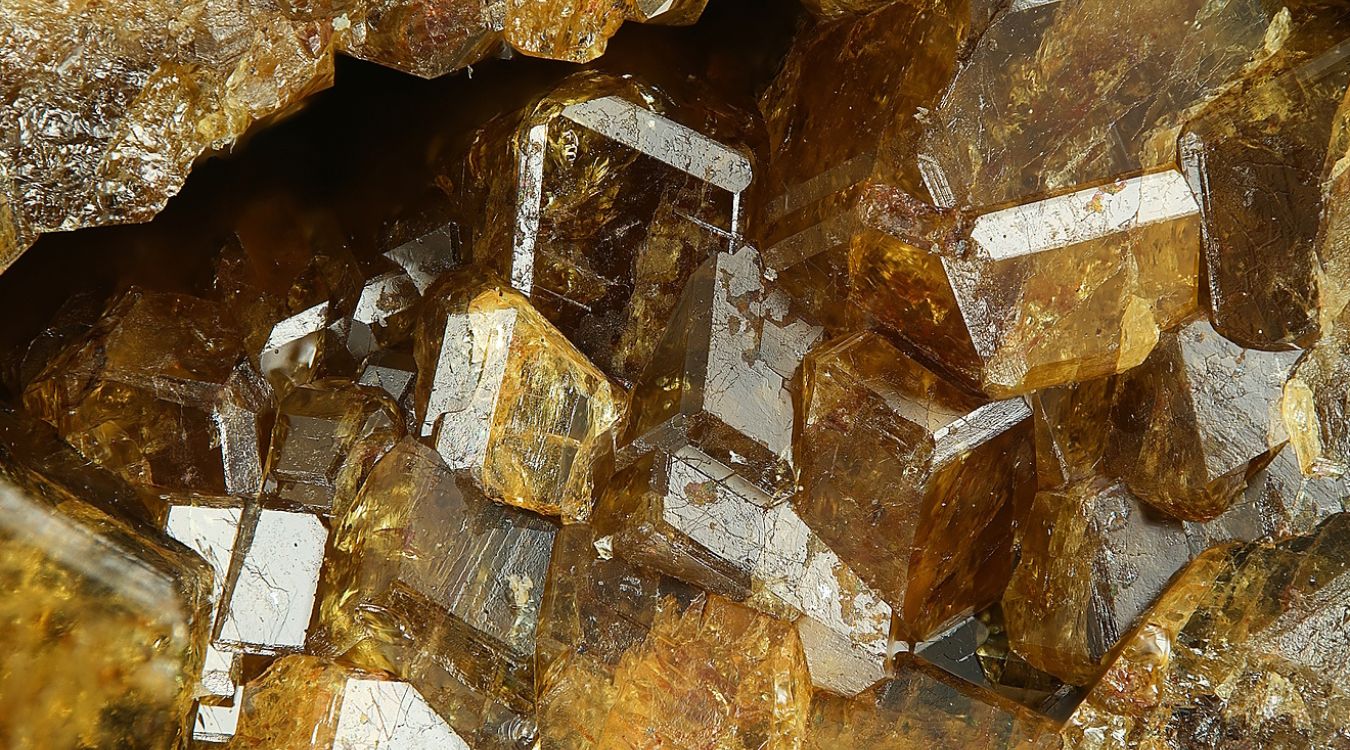
Calderite is a fascinating mineral that often goes unnoticed. Found primarily in metamorphic rocks, this mineral boasts a unique blend of manganese, iron, and magnesium. Its striking reddish-brown color makes it a standout in any rock collection. But what exactly makes calderite so special? Calderite is not just a pretty face; it has a rich history and intriguing properties that make it a subject of interest for geologists and mineral enthusiasts alike. From its formation process to its various uses, there’s a lot to learn about this captivating mineral. Ready to dive into 25 amazing facts about calderite? Let's get started!
Key Takeaways:
- Calderite is a unique mineral with a brown to reddish-brown color, found in countries like India, South Africa, Brazil, Australia, and Russia. It's used in collector's items, geological studies, education, industry, and decorative pieces.
- Calderite has a specific gravity of 3.4 to 3.6, making it denser than common minerals. It can exhibit pleochroism, showing different colors from different angles. It's also used in batteries, pigments, and metallurgical processes.
What is Calderite?
Calderite is a fascinating mineral that often catches the eye of geologists and mineral enthusiasts. This mineral has unique properties and an interesting history. Let's dive into some intriguing facts about Calderite.
-
Calderite is a manganese iron silicate mineral. Its chemical formula is (Mn,Fe)4Si4O10(OH)2.
-
This mineral is named after William Calder, a Scottish geologist who made significant contributions to the field of mineralogy.
-
Calderite typically forms in metamorphic rocks. These rocks have undergone transformation due to intense heat and pressure.
-
The mineral is commonly found in brown to reddish-brown colors. This coloration is due to the presence of iron and manganese.
-
Calderite has a Mohs hardness of 5 to 6. This means it is relatively hard but can still be scratched by harder substances.
Where Can You Find Calderite?
Calderite is not just found anywhere. Its occurrence is limited to specific geological settings. Here are some places where Calderite can be found.
-
India is one of the primary sources of Calderite. The mineral is often found in manganese-rich deposits.
-
South Africa also has notable Calderite deposits. These are typically associated with iron and manganese mining areas.
-
In Brazil, Calderite can be found in metamorphic rock formations. These formations are rich in manganese and iron.
-
Australia has some Calderite deposits as well. These are usually located in regions with significant geological activity.
-
Russia is another country where Calderite can be found. The mineral is often associated with other manganese minerals.
Unique Properties of Calderite
Calderite has some unique properties that make it stand out among other minerals. Let's explore these properties.
-
Calderite has a vitreous to dull luster. This means it can appear glassy or somewhat dull, depending on the sample.
-
The mineral has a specific gravity of 3.4 to 3.6. This indicates it is denser than many common minerals.
-
Calderite is brittle. It can break or shatter easily when struck.
-
The mineral is often found in granular or massive forms. This means it can appear as small grains or large, solid masses.
-
Calderite can exhibit pleochroism. This property means it can show different colors when viewed from different angles.
Uses of Calderite
While Calderite is not as widely used as some other minerals, it still has some interesting applications.
-
Calderite is often used as a collector's mineral. Its unique properties and appearance make it a favorite among mineral collectors.
-
The mineral can be used in geological studies. Its presence can provide information about the geological history of an area.
-
Calderite can also be used in educational settings. It helps students learn about mineral properties and identification.
-
In some cases, Calderite is used in industrial applications. It can be a source of manganese and iron.
-
The mineral can also be used in decorative pieces. Its unique coloration and appearance make it suitable for ornamental purposes.
Interesting Facts About Calderite
Here are some more intriguing facts about Calderite that you might find interesting.
-
Calderite is often found in association with other manganese minerals. These include minerals like rhodochrosite and spessartine.
-
The mineral can form crystals, but these are relatively rare. Most Calderite samples are found in massive or granular forms.
-
Calderite has been studied for its potential use in batteries. Its manganese content makes it a candidate for use in certain types of batteries.
-
The mineral can also be used in pigments. Its reddish-brown color can be used to create natural pigments for art and decoration.
-
Calderite is sometimes used in metallurgical processes. Its manganese content can be valuable in the production of certain alloys.
Final Thoughts on Calderite
Calderite, a fascinating mineral, holds a unique place in geology. Known for its reddish-brown hue, it’s a manganese-rich member of the garnet group. Found mainly in metamorphic rocks, calderite often forms under high-pressure conditions. Its composition includes manganese, iron, and aluminum, making it distinct among garnets. This mineral is not just a collector's item but also valuable in scientific research. Its presence can indicate specific geological processes, helping geologists understand Earth's history better. Calderite's rarity adds to its allure, making it a prized specimen for mineral enthusiasts. Whether you're a geology buff or just curious, calderite offers a glimpse into the planet's dynamic processes. So next time you come across this mineral, remember its significance and the stories it tells about our ever-changing Earth.
Frequently Asked Questions
Was this page helpful?
Our commitment to delivering trustworthy and engaging content is at the heart of what we do. Each fact on our site is contributed by real users like you, bringing a wealth of diverse insights and information. To ensure the highest standards of accuracy and reliability, our dedicated editors meticulously review each submission. This process guarantees that the facts we share are not only fascinating but also credible. Trust in our commitment to quality and authenticity as you explore and learn with us.


